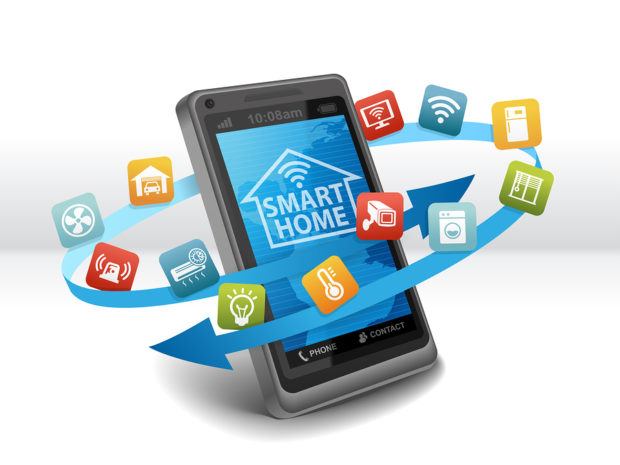While the average American home hasn’t changed much on the outside, the devices and lifestyles inside have changed dramatically in the last 50 years. As transmitter radios were replaced with voice-controlled speakers, home insurance leaders learned to track consumer adoption and regulation in the space to define the right timing to jump on board. That time is now.
Modern, Internet-enabled devices use invisible safeguards to significantly limit the potential for human error, offering a sense of security not available before. And in a post-COVID-19 world, our desire for safety will only grow.
One provider in the smart home space, SimpliSafe, is seeing a surge in demand during the current pandemic, indicating that Americans are looking to Internet of Things (IoT) providers for their security needs. With this new adoption comes new opportunities for insurers who also offer protection and security (albeit, typically in the financial sense) to pair up with IoT leaders and create a new path to more holistic home security and well-being.
With heightened levels of security top of mind for most homeowners today, home insurers have a very obvious choice to make: get on board and capitalize on the huge potential savings here or fall behind. Some of the key trends that prove that the industry is ready for this evolution include:
Smart Devices Prevent Claims
The auto industry offers a good example. Millions of U.S. cars now use sensor technology to prevent accidents, with excellent results. A 2018 study by J.D. Power found that 49 percent of car owners said a blind-spot alert helped avoid a crash, while 42 percent credited backup cameras and parking sensors. What’s more, drivers often save on their car insurance premiums for using these systems.
The home insurance industry is poised to do the same. Water damage and freezing account for the second-largest share of P/C insurance claims, and with an average claims size of $10,000, the industry is looking at annual losses close to $25 billion, according to data provided by the Insurance Information Institute. But water sensor technology could help homeowners reduce the impact of common claims like water leaks and freezing pipes by offering early detection.
Insurers and smart home device makers can meet the needs of American homeowners by creating DIY systems that integrate seamlessly into the home and work in tandem with the insurance provider, leading to a reduction in common claims.
Smart Home Adoption Is Accelerating
Of course, smart devices only work if people use them. Fortunately, smart devices are increasingly popular—Bain Capital predicts that in just five years there will be 50 billion connected devices and a trillion by 2030. According to Statista Market Forecast, the global smart home market was valued at $55.65 billion in 2016 and is projected to reach $174.24 billion by 2025, growing at an annual rate of 13.52 percent. And while 32.4 percent of homes currently have a smart device, that number is expected to reach 52.4 percent by 2025.
Still, that leaves millions of homes without one. Insurance carriers have an ethical responsibility to their customers to provide protection and a fiscal responsibility to their shareholders to provide revenue, an avenue where IoT devices squarely meets the needs of both parties. At Hippo, we estimate that every dollar spent on a complimentary smart device for our customers indicates financial savings down the line from our early indications of claims-related savings. Not to mention the sizable impact it can have on an improved loss ratio over time, a metric of paramount importance to the reinsurance community.
A Partnership That Benefits Everyone
Finding the right partners and discounts is crucial. In home insurance, where nearly 40 percent of our claims are related to fire, water damage or theft, IoT devices serve a growing list of purposes—for example, placing a smart monitor on a washing machine on the second floor, which is the source of 8 percent of U.S. homes’ water damage claims. Soon, we’ll be able to offer customers who make the best use of these devices even deeper discounts on their premiums.
Insurance industry leaders need to think along these lines of integration and partnership to drive adoption and keep their insureds protected. In other industries, landlords could see reductions in overhead expenses, and life insurers could better manage their clients and their lifestyles to underwrite tailored policies. Cross collaboration among industries like auto and home could bring efficiency and order with multiprong protective benefits.
Together, we can mirror the success of the auto industry’s safe driver discount, with insurers using smart technology to benefit from the proactive actions of their clients. A smarter home is a safer home, and a smart home insurance policy is a safer, more comprehensive and more attractive one.





















 Executives on the Move at HSB, American Modern Insurance Group, AIG
Executives on the Move at HSB, American Modern Insurance Group, AIG  Acrisure to Buy MGA Vave From Canopius
Acrisure to Buy MGA Vave From Canopius  Legal Finance and Insurance: From Confusion to Collaboration
Legal Finance and Insurance: From Confusion to Collaboration  Berkshire Hathaway Announces Leadership Appointments: New CEO at GEICO
Berkshire Hathaway Announces Leadership Appointments: New CEO at GEICO 





